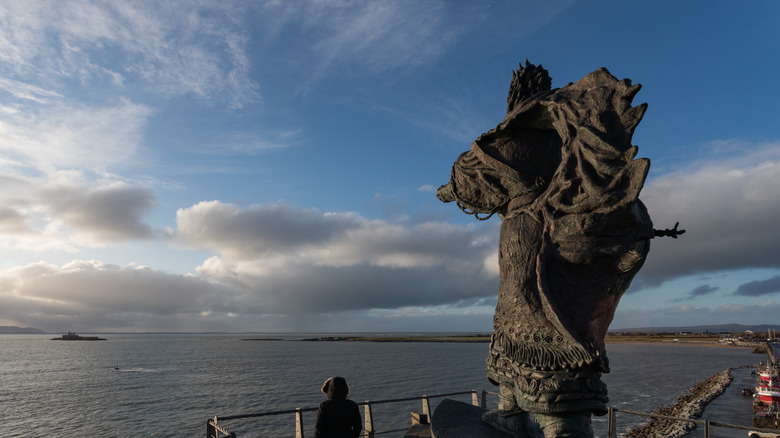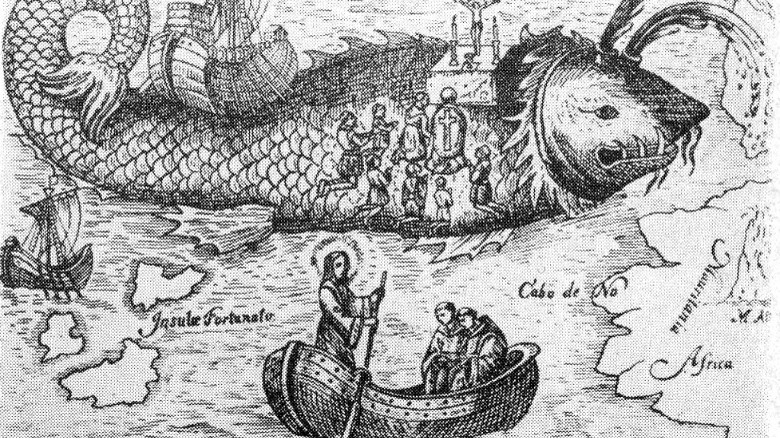Did This Irish Monk Really Discover America First?
For centuries, American schoolchildren have been taught that Christopher Columbus discovered America. It's a bit of historical shorthand that is actually false (or, at the very least, misleading) on multiple levels. First, Columbus didn't "discover" America any more than Neil Armstrong "discovered" the moon; America had been here (and populated) for tens of thousands of years before he set foot here. He also was not the first European to set foot in what would eventually be called the "New World," with that honor going to Viking explorer Leif Erikson, who got there four centuries before Columbus, according to History. And third, Columbus landed nowhere near the landmass that would become the United States of America.
As it turns out, however, when it comes to sussing out the first European to land in the Western Hemisphere, there's a third possibility, although an extremely unlikely one. Legend has it that an Irish monk named St. Brendan actually got here centuries before Erikson did, although the historical evidence for this claim is weak at best.
St. Brendan might have landed in Florida
St. Brendan was a real monk who lived and ministered around Ireland and Northern Europe in the sixth century, according to Irish Central. He was also a seafarer, and accounts of his voyages survive in ancient documents from around the region, according to Florida Irish Heritage Center. At least one of his reported voyages, according to legend, may have ended with him landing at a landmass in the Western Hemisphere, centuries before Erikson and a millennium before Columbus. Specifically, he claimed to have found a flat, warm, and verdant locale, which may have been Florida or a Bahamian island. Of course, his accounts are also filled with encounters with sea monsters and volcanoes, so perhaps those stories should be taken with more than a few grains of salt.
Nevertheless, in 1976, author Tim Severin tried to recreate Brendan's boat, based on ancient descriptions, and see if it was seaworthy and could make it across the Atlantic Ocean. Sure enough, after 50 days at sea, Severin and his team did make landfall in the west, albeit not in Florida or the Bahamas but in Newfoundland. Of course, this just demonstrates that Brendan's reported voyage was possible, not that it actually happened.

